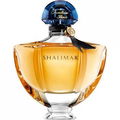03/09/2019

Serenissima
737 Reviews
Translated
Show original

Serenissima
Top Review
22
the emperor's favourite sister
Napoleon Bonaparte, Emperor Napoleon I of France, was known to be a family man.
So it was natural for him to use family members as regents in the conquered territories.
They were actually more or less "governors"; because even then the power lay alone in Paris!
This "family policy" was a variant of the motto: "Tu felix Austria nube!"
That's only part of it.
For in contrast to "Others may wage war; you, happy Austria, marry", he wanted both:
Waging war and pursuing a successful marriage policy.
Pauline (1780-1825) was Napoleon's favourite sister.
She was charming and fun-loving, her beauty proverbial; appearance and style were full of grace.
Today one would say: Pauline "rocked" the Paris salons!
All the great artists of their time were eager to win over this capricious young woman as a model.
(I hear "Aha!" already here. Yes, it is: the "Resting Venus"/the "Borghese Venus" of Canova!)
Antonia Canova was also one of those who, in the name of art, courted the favor of this beauty: with success!
She sat, better: lay naked model for him and so one of the most beautiful statues in white, almost virgin marble was created.
Still today she can be admired in the Galleria Borghese in Rome; not only men are fascinated by the portrait of this timelessly beautiful woman!
Pauline also bowed to her brother's marriage policy, but she was not unwilling to marry Camillo Borghese again.
After all, she married into one of the oldest noble families in Italy; she competed with her sister-in-law Joséphine, the empress, for all her life.
She was the only family member to accompany Napoleon into his first exile in Elba.
He had to travel to St. Helena alone: she was already sickly. In 1825 this unforgettable woman died of cancer at the age of 44; she was buried on the former family estate in Rome.
The house of Francois Rancé, founded in Grasse in 1795, was dedicated to giving a fragrance to all the women of the Bonaparte family: all the sisters and also the mother Laeticia were honoured in this way.
The only exception in the "Collection Imperiale" is Empress Eugénie - the wife of Napoleon III.
As early as 1807, an attempt was made there to capture the unique freshness, the playful spirit, the sensuality and joy of this woman in a bottle. She was admired and desired.
"Pauline" should reflect "sophicated Emotions", "A Vision of Beauty" and provide every woman who wears this fragrance with the same personal magic.
According to Rancé, cotton blossom and ylang-ylang stand for innocence; the wild violet and the white rose for charm; patchouli, cedar, benzoin resin and tonka bean for a touch of sensuality All that was Pauline Borghese: all that is "Pauline"?
Let's see:
It welcomes me a truly enchanting entrée of the already mentioned cotton blossom (unfortunately rarely used), a beautiful orange aroma and the golden flicker of ylang-ylang.
Well, I wouldn't necessarily associate "innocence" with that, though.
The following fragrance development is charming in any case: already the white rose has its big appearance - an incomparable fragrance chord.
The wild violet tries to catch up with this queen of the flower world, but has to put back a little. But it forms an enchanting background.
Patchouli ennobles this, as always with its golden-brown fragrance beauty; flowing sensually, it crowns the previous fragrance development - awakens the senses at the latest now.
The sweetness of the tonka bean is dampened by the resinous spice of benzoin, before the noble Lebanon cedar throws its silvery silver aroma into the fragrant scales: a vibrant finale is created, which underlines Pauline's fragrant sensuality.
Rancé's "Pauline" is, despite its noble ingredients, bright and light; it lacks the "attracting heaviness" of many older fragrances.
So the above criteria for this fragrance were really met.
"Pauline" keeps with me for a few hours; sprayed in the morning, I still feel her closeness in the late afternoon. Like many, not too heavy, but still full-bodied scented works of art, she leaves me quietly and politely.
She doesn't leave any unpleasant scents behind - there remains a delicate touch, which still puts the magic of this very feminine being around me.
The pretty bottle with the big blue organza bow also lures you to spray.
One can comply with this request without hesitation; a fine mist of scent develops - no whirling chaos of differently mature scents!
Rancé says, "Pauline carries away between heaven and earth!" (O-tone!)
Yes, that's what I like to sign: this elegant, lively woman abducts into another world, into another time.
It's worth following her curls!
So it was natural for him to use family members as regents in the conquered territories.
They were actually more or less "governors"; because even then the power lay alone in Paris!
This "family policy" was a variant of the motto: "Tu felix Austria nube!"
That's only part of it.
For in contrast to "Others may wage war; you, happy Austria, marry", he wanted both:
Waging war and pursuing a successful marriage policy.
Pauline (1780-1825) was Napoleon's favourite sister.
She was charming and fun-loving, her beauty proverbial; appearance and style were full of grace.
Today one would say: Pauline "rocked" the Paris salons!
All the great artists of their time were eager to win over this capricious young woman as a model.
(I hear "Aha!" already here. Yes, it is: the "Resting Venus"/the "Borghese Venus" of Canova!)
Antonia Canova was also one of those who, in the name of art, courted the favor of this beauty: with success!
She sat, better: lay naked model for him and so one of the most beautiful statues in white, almost virgin marble was created.
Still today she can be admired in the Galleria Borghese in Rome; not only men are fascinated by the portrait of this timelessly beautiful woman!
Pauline also bowed to her brother's marriage policy, but she was not unwilling to marry Camillo Borghese again.
After all, she married into one of the oldest noble families in Italy; she competed with her sister-in-law Joséphine, the empress, for all her life.
She was the only family member to accompany Napoleon into his first exile in Elba.
He had to travel to St. Helena alone: she was already sickly. In 1825 this unforgettable woman died of cancer at the age of 44; she was buried on the former family estate in Rome.
The house of Francois Rancé, founded in Grasse in 1795, was dedicated to giving a fragrance to all the women of the Bonaparte family: all the sisters and also the mother Laeticia were honoured in this way.
The only exception in the "Collection Imperiale" is Empress Eugénie - the wife of Napoleon III.
As early as 1807, an attempt was made there to capture the unique freshness, the playful spirit, the sensuality and joy of this woman in a bottle. She was admired and desired.
"Pauline" should reflect "sophicated Emotions", "A Vision of Beauty" and provide every woman who wears this fragrance with the same personal magic.
According to Rancé, cotton blossom and ylang-ylang stand for innocence; the wild violet and the white rose for charm; patchouli, cedar, benzoin resin and tonka bean for a touch of sensuality All that was Pauline Borghese: all that is "Pauline"?
Let's see:
It welcomes me a truly enchanting entrée of the already mentioned cotton blossom (unfortunately rarely used), a beautiful orange aroma and the golden flicker of ylang-ylang.
Well, I wouldn't necessarily associate "innocence" with that, though.
The following fragrance development is charming in any case: already the white rose has its big appearance - an incomparable fragrance chord.
The wild violet tries to catch up with this queen of the flower world, but has to put back a little. But it forms an enchanting background.
Patchouli ennobles this, as always with its golden-brown fragrance beauty; flowing sensually, it crowns the previous fragrance development - awakens the senses at the latest now.
The sweetness of the tonka bean is dampened by the resinous spice of benzoin, before the noble Lebanon cedar throws its silvery silver aroma into the fragrant scales: a vibrant finale is created, which underlines Pauline's fragrant sensuality.
Rancé's "Pauline" is, despite its noble ingredients, bright and light; it lacks the "attracting heaviness" of many older fragrances.
So the above criteria for this fragrance were really met.
"Pauline" keeps with me for a few hours; sprayed in the morning, I still feel her closeness in the late afternoon. Like many, not too heavy, but still full-bodied scented works of art, she leaves me quietly and politely.
She doesn't leave any unpleasant scents behind - there remains a delicate touch, which still puts the magic of this very feminine being around me.
The pretty bottle with the big blue organza bow also lures you to spray.
One can comply with this request without hesitation; a fine mist of scent develops - no whirling chaos of differently mature scents!
Rancé says, "Pauline carries away between heaven and earth!" (O-tone!)
Yes, that's what I like to sign: this elegant, lively woman abducts into another world, into another time.
It's worth following her curls!
9 Comments




 Top Notes
Top Notes  Cotton flower
Cotton flower Sicilian orange
Sicilian orange Ylang-ylang
Ylang-ylang Heart Notes
Heart Notes  Hooded violet
Hooded violet Indian patchouli
Indian patchouli Base Notes
Base Notes  Lebanon cedar
Lebanon cedar Siam benzoin
Siam benzoin Tonka bean
Tonka bean






















